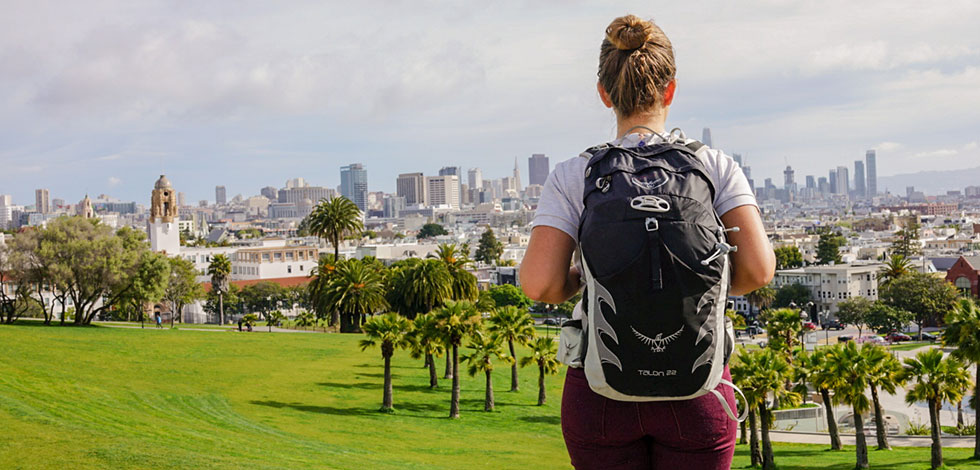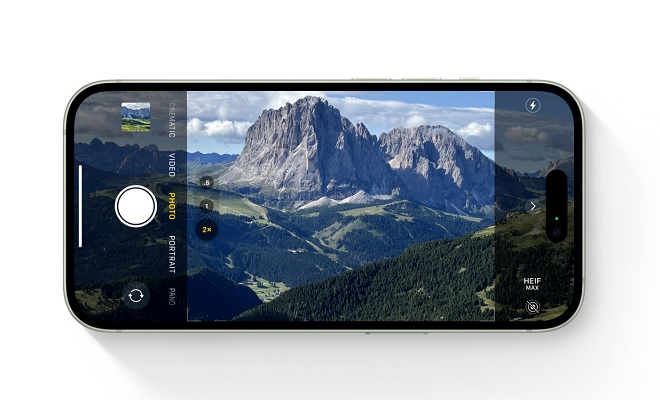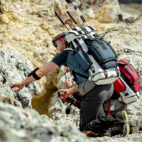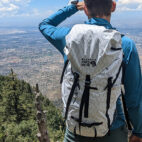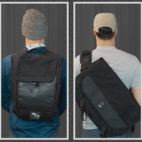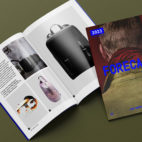How to Pack Light for a Week: Tips, Lists, and Bags
The best packing advice I’ve ever received was from a Colombian astronomer I met while backpacking in Switzerland when I was 21. As he watched me struggle to lift my full 48L Osprey off the ground and on my back, he said “If you want to pack lighter, get a smaller bag. Whatever size bag you have, you’ll always find a way to fill it.”
His advice stuck with me as I continued my 6-week journey through Europe: schlepping my things from train station to hostel; packing and repacking so as to fit it on a Ryanair flight; and the constant feeling of relief whenever I dropped it on the ground and abandoned it for a while. It would be nice to have a smaller bag, I thought. So what could I pack less of?
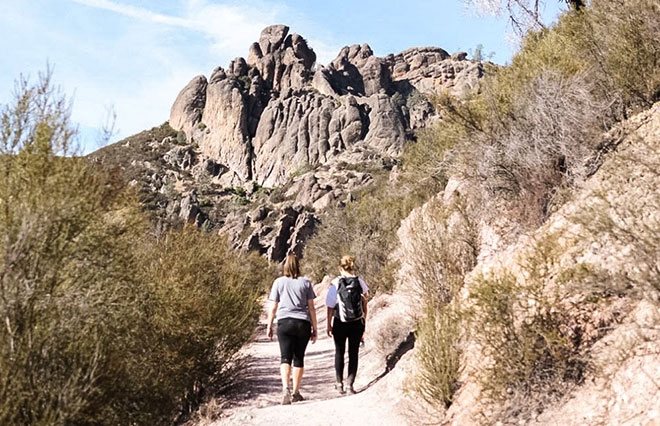
After five years and thousands of miles of travel, I finally acted on his advice. I downsized from a 48L to a 22-25L bag for any trip one week or longer. Even if it seems extreme, I recommend it for anyone who wants to:
- Avoid paying for checked bags (even on budget airlines or basic economy tickets)
- Easily take public transportation or walk a few blocks with your luggage
- Spend less time packing and unpacking
- Feel less burdened by your stuff
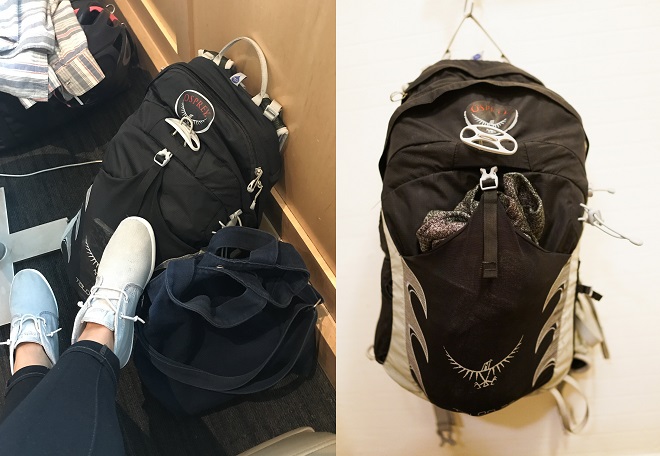
Interested? Read on to see packing lists, tips, and inside my bag and get inspired on how to pack light for a week (or more) of travel.
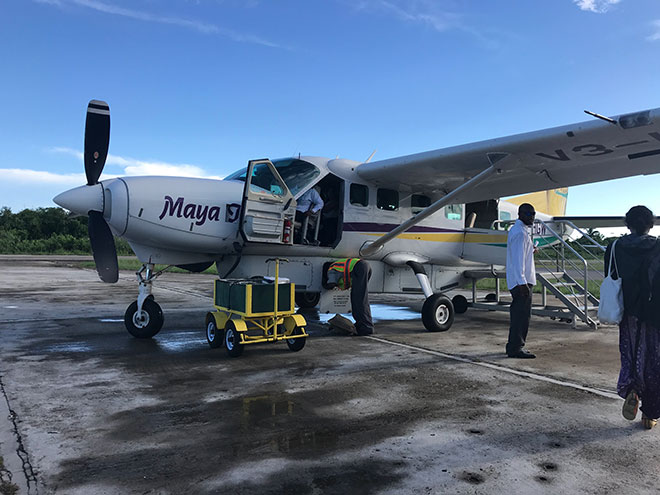
The bag: Charlie 25L
I’d spent the majority of my 20s traveling with the Osprey Kestrel 48. While it had begun to feel too big for my needs, it had some features I’d come to love and want in my next bag: the separate top and outside mesh pockets, comfortable hip straps, and lightweight, durable material. I also found the ability to access the main pack from the top and bottom handy, but knew it might be hard to find a smaller bag with this feature. Initially, I switched to the Osprey Talon 22, a day bag that excels at its intended purpose—day hikes and moving around town—but was also a good fit for multi-day, ultralight travel. Recently, I switched it out for the similarly sized backpack, Charlie 25L by Remote Equipment, which is better designed for travel.
The pros
- Size and space: With a 25-liter volume (expandable to 30+ liters), the backpack has plenty of space for a week’s worth of clothes and travel essentials. To travel as light as possible, I often leave the removable top pocket at home. However, it does help seal the bag and make it fully waterproof—I’m more likely to keep it on for that reason vs. the extra capacity.
- Organization: The triple-cavity organization system provides effective compartmentalization that’s ideal for travel. Two inner pockets, water bottle pockets, and a laptop sleeve help provide additional organization. Additionally, it has top-loading access and a front access zipper so you can access everything without emptying your entire bag.
- Weight: Weighing 2.19 pounds (992 grams), the Charlie 25L is heavier than the Osprey Talon I used to use, but lighter than many carry-on travel backpacks. Fortunately, hip straps (a rarity in non-hiking backpacks of this size) help distribute weight and make it comfortable to wear even when loaded up.
- Comfort: The backpack features ergonomic shoulder straps with dual-density foam and a stepped back panel design for comfort and breathability. The removable waist and sternum straps also enhance stability and help balance weight. Although designed for commuting and urban scenarios, I found it comfortable to wear while hiking and had no issues using it as my main pack while hiking for 4 days on the Kumano Kodo trail of Japan.
- Look and feel: I love the stylish, modern design and look of this bag. Unlike some other backpacks, which can feel bulky and dorky, this one is sleek and just plain cool.
- Durability: Constructed with Challenge Outdoor ECOPAK fabric, the backpack is environmentally friendly, waterproof, and abrasion-resistant. The materials used, including Spectra fiber and high-density polyethylene, contribute to the backpack’s durability.
- Waterproof: I walked for 2 hours in the rain (some of it torrential) and everything inside my pack was totally dry when I finally arrived at my hotel. If that isn’t a bode of confidence for its waterproofness, I don’t know what is.
The cons
- Value: Priced at $269, the Charlie 25L isn’t cheap but this is on par with other bags of its category. I think its quality construction and versatile design justifies the cost. So far, it’s proven to be a durable, feature-rich backpack, and the price isn’t too different from other, similar backpacks.
- Access: When my bag is full, I’ve had a little trouble accessing the small inner pockets and quickly taking my laptop in/out of the laptop sleeve. But neither is a deal breaker.
The packing tips: How to pack light for a week in a 25L bag
Packing this light isn’t always easy for all travelers, but below are a few strategies I use to pack light enough to fit everything I need for a week (or longer) in a 22-25L bag:
1. Pack three days’ worth of clothes
Don’t assume you need seven outfits for a seven-day trip. Instead, pack three knowing you can mix and match those items to create enough options for your entire trip. Take a capsule wardrobe approach and focus on basics and versatile pieces that are easy style for many occasions.
2. Limit your shoes to 1-2 pairs max
Shoes also tend to take up a large portion of our bags: bring 1-2 pairs max. For cold weather trips, I bring one versatile pair of waterproof boots that I can use for urban and outdoor adventure (I like Sorel’s line of Chelsea boots for this). For warm-weather trips, I wear one pair of slip-on sandals (right now, my go-to is the Crescent Slip-On by Roam) and pack a pair of super packable, lightweight, water-friendly sneakers by Tropicfeel (currently, I wear the Jungle model).
3. Bring the smallest version of your toiletries
With limited space to use, you won’t catch me traveling with a 12-ounce bottle of shampoo—or even a 3.4 ounce, most trips. Keep everything as small as possible—you typically need less than you think, anyway.
4. Bring what you know you’ll need, not what you think you’ll need
“The space in our pack is a precious commodity. It should be used efficiently and guarded from our own laziness of packing items ‘just in case’. Yes, we should be prepared. But let’s be smart about it,” advises the Carryology HQ team in The Best Backpacks for One-Bag Travel. Though in reference to hiking, it applies to travel as well. Trust that you can pick up most ‘just in case’ items on the road if and when you actually need them. Stick to only bringing the “know I’ll need” items.
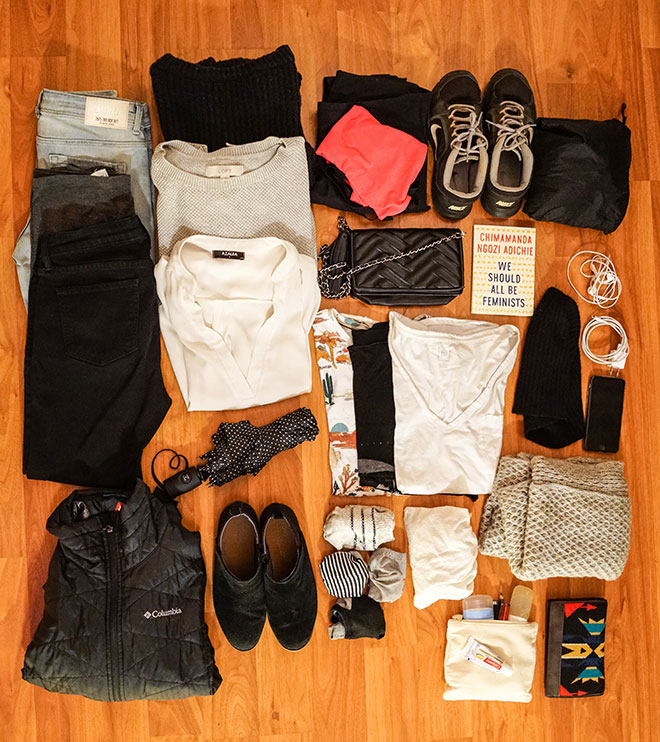
5. Pack a couple of days in advance, then revise
When you’re in a rush, it’s easy to pack too much—or all the wrong stuff. To avoid this, set aside time a few days before your trip to gather everything you’ll need. Then, the day before, take a second pass at everything. Is there anything you forgot? Anything you could omit? Do you really need five t-shirts?
6. Use compression packing cubes
Packing cubes help keep items in your bag organized while traveling, but compression cubes also do this and help you fit more in a small space. Make use of compression cubes, like Thule’s Compression Cubes, to make your items more compact.
7. Roll or fold, it doesn’t matter
The TL;DR on this debate is no, rolling clothes instead of folding them does not save you more space in your bag—though it does better organize it. Do whichever you prefer.
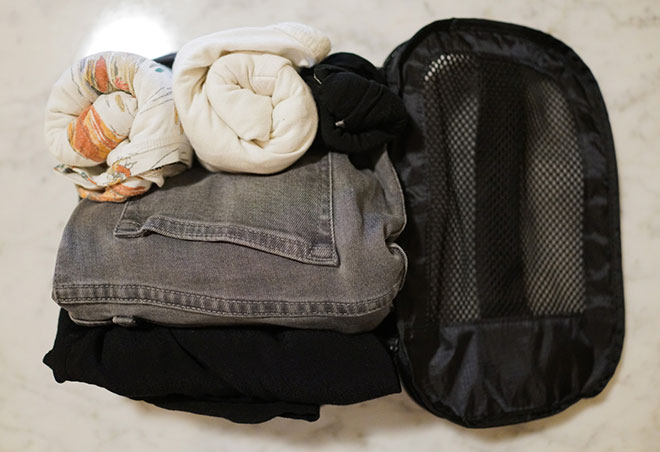
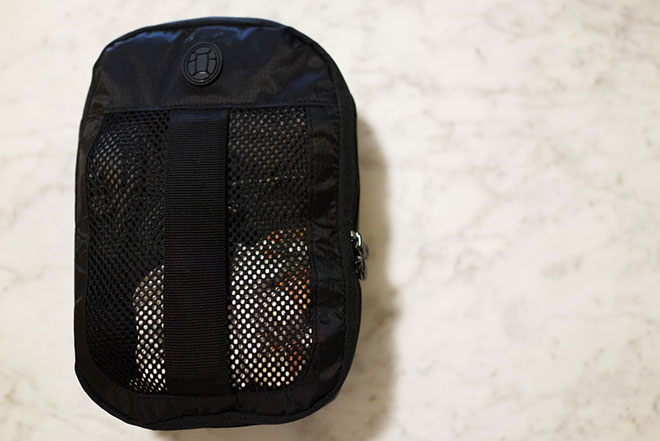
An ultralight packing list for a week in a 22-25L bag
Although your exact packing list will vary depending on your personal preferences, trip, and time of year, use this base as an example of what will fit and inspiration for figuring out your own packing list.
Clothing
Clothes take up the most space in our bag while traveling, so it’s worth focusing a good amount of energy here. Pare down to the essentials, and pick items that aren’t overly bulky. You don’t necessarily have to go out and buy travel-specific clothing—there’s a lot you can do with just your existing closet— but there are a couple of items you may want to invest in. For example:
- Underwear: 3-5 pairs, depending on if you’re willing to do laundry or not.
- Bras: 1-2 (one sports bra, one non)
- Socks: 1-4 pairs, depending on your shoes. I like Smartwool’s Merino wool socks since they’re easy to wash on the road.
- Tops: 3 total (e.g. 1 tank, 1 t-shirt, 1 long-sleeve)
- Warm sweater or sweatshirt: 1 neutral, versatile option.
- Jacket: pack 1 or none, depending on climate. For spring trips, go for a lightweight rain jacket. For colder climates a down jacket, like Columbia or Patagonia, packs down best.
- Pants: 2 pairs of pants
- Skirt/shorts: 1 total, not each.
- Bathing suit: Men, a multi-purpose pair of shorts like Patagonia’s all-wear hybrid shorts make the best travel swimsuits.
- Shoes: Wear one, pack one, and try to limit yourself to no more than 2 pairs of shoes. For runs and hikes, choose something that packs down small, like Tropicfeel’s line of sneakers.
- Hat (optional)
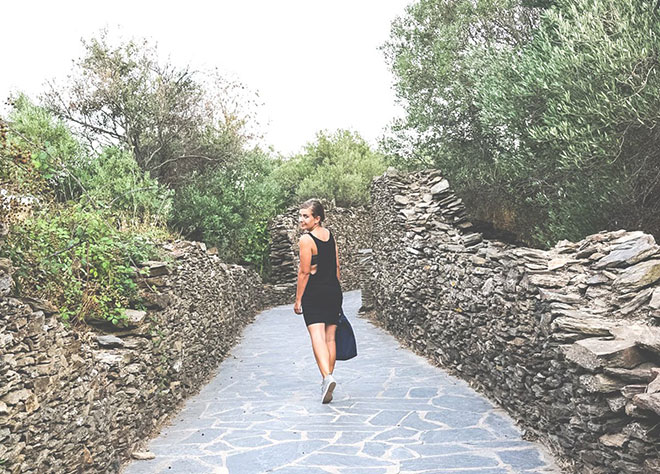
Toiletries
For your toiletries, give yourself a “one bag challenge” (that’s right, no separate makeup and toiletry bag). Grab a small-ish dopp kit and pack:
- Toothbrush
- Toothpaste (use Matador’s refillable toothpaste tubes or Humankind’s toothpaste tablets if you want to avoid buying mini travel toothpaste)
- Shampoo, or Dr Bronner’s, which doubles as body wash and shampoo.
- Conditioner
- Lotion
- Face wash and skincare
- Deodorant
- Sunscreen
- Razor
- Tweezers
- Band-aids
- Pills and first-aid
- Comb
- Makeup (optional)
- Bug spray (if needed)
To lighten your toiletry load, use reusable containers such as those by GoToob or Cadence to decant your favorite toiletries into small containers with just enough for the trip at hand. I find that GoToob’s 1.25oz containers can hold enough shampoo or conditioner for a week-long trip, whereas Cadence’s smallest containers, at 0.56 ounces, are ideal for things like makeup, serums, and face lotion.
Electronics
Like everything in your pack, avoid redundancies with your electronics too (e.g. packing a laptop, tablet, and smartphone). Generally, the most I’m ever bringing is a kindle, phone, laptop, and camera, though usually I won’t bring all four. Here’s an example packing list for your electronics:
- Phone
- Laptop (optional)
- Camera (optional)
- Kindle (optional)
Accessories
- Chargers
- Multi-purpose brick (I like the Anker 737 charger, so I can bring just one brick for phone, laptop, and everything else)
- External battery pack (the Anker 622 is compact and doubles as a phone stand ideal for watching in-flight movies)
- Adapters, if you’re going to another country. Apple has a well-made set that lets you pack only the one (or two) adapters you need.
In-flight essentials
To stay comfortable while flying, you could go extra minimalist and pack nothing but a warm jacket, phone, and earbuds to keep you comfortable and entertained. But if you have extra room (which you should), add these items:
- Headphones: To save space, I stick to Apple’s AirPods. Other headphones may have better noise-canceling capabilities and comfort but when it comes to saving space, the AirPods are hard to compete with. Plus, the most recent generation has come a long way in terms of filtering out unwanted noise.
- Headphone adaptor: Although some airlines are adding the ability to connect bluetooth devices to your personal TV, it’s not standard (yet!). The AirFly adaptor allows you to connect your headphones to TVs in flights and is a handy, and tiny, addition to my in-flight kit.
- Travel pillow: I don’t usually bring a travel pillow unless the flight is more than 6 hours long. When I do, I reach for the Trtl Pillow, which is more compact than a traditional U-shaped foam pillow.
- Water bottle: Vapur is one of the most compact water bottles around.
- Eye mask: Muji make good ones for travel.
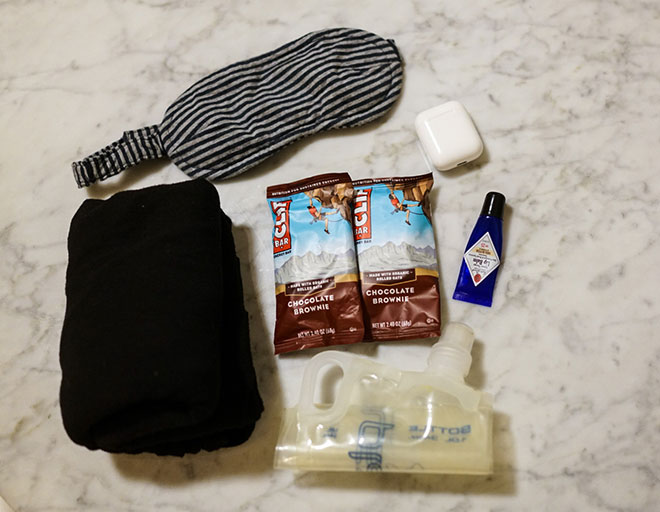
Other travel gear
You don’t need much beyond your clothes, toiletries, in-flight essentials, and electronics—especially since you’ll be able to pick up most emergency items on the road. But a couple of extras you shouldn’t forget:
- Passport (if traveling abroad)
- Wallet (if you usually carry something bulky, consider a slimmer travel wallet)
- Snacks
- Pen
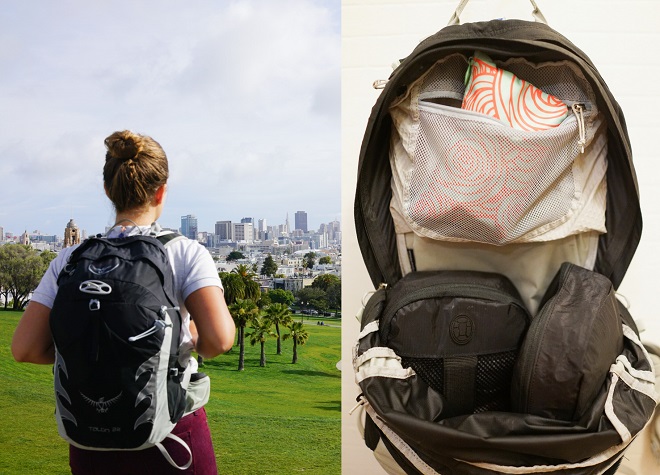
How low can you go?
Packing for a full week of travel (or longer!) in a 22L backpack may seem crazy, unnecessary, or just too difficult. But it’s also such a great feeling to travel without the burden of things on your back. So why not give it a go? After a little practice and thoughtful crafting of your own ultralight packing list, I’m sure you can downsize your bag and pack extra light for a week of travel too.
This article was written by Jessie Beck. Check out her blog at eatbiketravel.com.





 Carry Awards
Carry Awards Insights
Insights Liking
Liking Projects
Projects Interviews
Interviews
